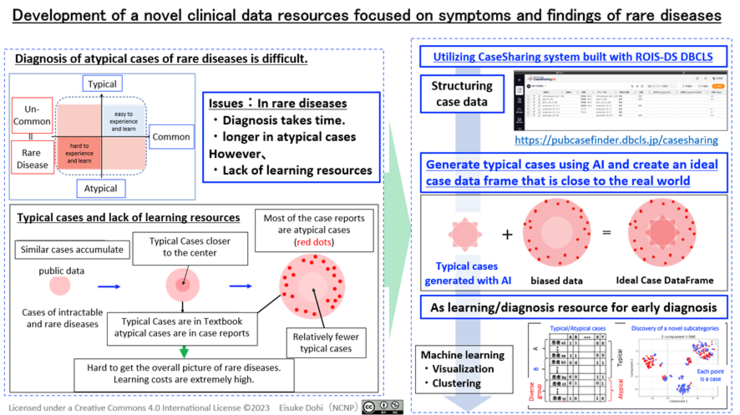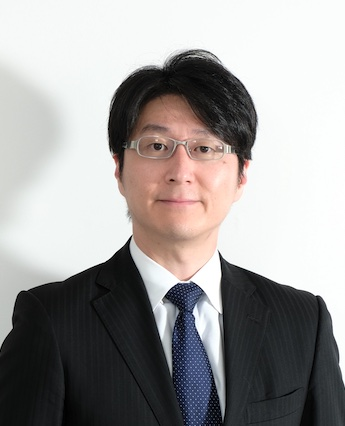Development of a novel clinical data resources focused on symptoms and findings of rare diseases.
Abstract
In this research, individual case data focusing on symptoms and findings of patients with rare diseases will be created in a form close to the real world by utilizing AI to generate the data, creating a data resource that is easy to learn and understand for medical professionals, patients, and their families. We will also develop the use of the data as a "diagnostic resource" that leads to early diagnosis.
Rare diseases take an average of 7 to 8 years to be diagnosed, and patients and their families suffer a great deal until the diagnosis is made. Because of the small number of patients with this rare disease, it is difficult for medical professionals, including physicians, to gain sufficient experience. Even if they try to learn well, they mainly learn from textbooks, clinical research papers, and case reports, but there is one major problem. Textbooks and research papers present a typical patient profile, whereas case reports present patients with atypical symptoms and abnormalities (findings) observed on examination. The reason for this is that not all patients are registered and analyzed, which leads to biased information on symptoms and findings of patients with rare diseases, making it difficult to obtain the comprehensive picture of the disease. If the available information itself is biased, individual physicians may end up with a patient profile that is far from the real world, despite their best efforts.
Also, when a rare disease patient presents with atypical symptoms and findings, it is very difficult to make a diagnosis. Even if a diagnosis is made, there is no way to know at this point how atypical the patient in front of you is in this rare disease category, and it is difficult to explain this to the patient. If we can learn and utilize the data of symptoms and findings based on each patient in a form like the real world, we may be able to diagnose patients with rare diseases earlier than now.
We will examine whether the comprehensive picture of patients obtained from publications such as these are biased (publication bias) by extracting and matching symptoms and findings from real-world patients and from articles and case reports, which are publicly available learning resources that anyone can use to learn. In addition, we use generative AI to accumulate case data that mimic typical cases and create a data frame with a distribution of the number of cases that is close to the statistical data presented in clinical studies (individual case data generated with AI). We will also use the case data created here to group patients based on symptoms and findings using machine learning, and to express patient information in an easy-to-understand manner that considers the passage of time (visualization of case information), to create a data resource that makes rare diseases easier to understand and learn about.
Perspectives
Easy-to-learn and easy-to-understand learning resources for the entire spectrum of incurable and rare diseases.
If the information becomes publicly available, it will reduce the information gap between medical institutions and between patients and medical professionals.
Accelerate research on rare diseases that take time to accumulate cases.
It will provide a foundation for new case studies and research and development focusing on symptoms and findings.
Comments from principal researcher
Eisuke Dohi (Department of Mental Disorders, National Institute of Neuroscience, National Institute of Neurology and Psychiatry)
When seeing patients with undiagnosed diseases, I have learned that there are diseases that I do not yet know about or have not yet studied enough about, so I have studied more each time I see a patient. I have read many clinical studies and case reports on patients with rare diseases, but it takes very long time. I have been working with Dr. Hayakawa, who shares the same aspiration, to create a "diagnostic resource" that makes it easier for medical professionals, patients, and their families to learn and easier to understand, and that lead to a early diagnosis through the new technology.
Shared Researchers
Itaru Hayakawa (Division of Neurology, National Center for Child Health and Development)


